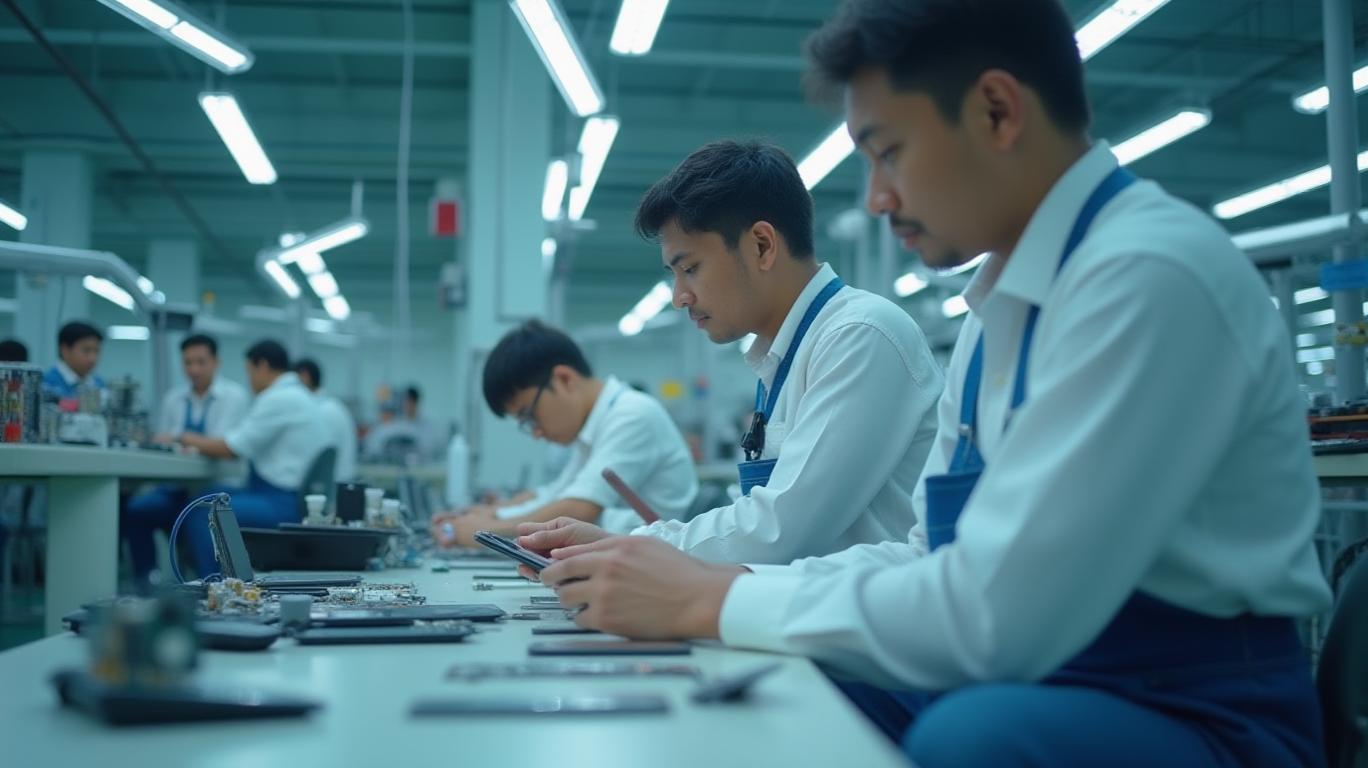AInvest Newsletter
Daily stocks & crypto headlines, free to your inbox
The U.S.-China trade war has thrust
into a high-stakes game of supply chain chess, with India emerging as its most critical strategic pawn. As tariffs loom and geopolitical tensions escalate, investors must ask: Can Apple's shift to Indian manufacturing offset rising costs, or will U.S. production ambitions prove a costly distraction? Let's dissect the numbers—and the risks—to uncover what this means for AAPL's valuation and tech supply chains.
Apple's push to ramp up Indian production—from 15% of iPhones in 2024 to a projected 32% by 2025—is no accident. By leveraging India's Production-Linked Incentive (PLI) schemes, which offer subsidies for local manufacturing, Apple avoids punitive U.S. tariffs on Chinese imports. This strategy has already borne fruit: iPhone exports from India surged to $12.1 billion in FY2023-24, with the U.S. importing $5.46 billion worth.
But challenges persist. While India's labor costs are $40 per iPhone (vs. $20 in China), the USB-C mandate threatens to disrupt production timelines. Apple's older Lightning-port models—critical to its 6% market share in India—could face bans unless exempted. The stakes? A potential $30 billion hit to PLI targets if exemptions aren't secured.
Apple's “Make it in America” ambitions? A financial pipe dream. Manufacturing iPhones in the U.S. would triple costs to $3,000 per unit—a 200% price hike—due to:
- Labor costs: U.S. assembly-line wages are 5x higher than in China ($16.50/hr in California vs. $3.63/hr in Foxconn's Chinese plants).
- Supply chain gaps: 80% of iPhone components (semiconductors, displays) are sourced from Asia. Replicating this ecosystem in the U.S. would cost $30 billion over three years, per Wedbush.
Even Foxconn's failed $10B Wisconsin plant—now a face-mask factory—underscores the reality: the U.S. lacks the scale and skills for high-volume electronics assembly.
Apple's strategy hinges on navigating a volatile landscape:
1. China's retaliation: Beijing could block Apple's iPhone exports to India, as it did with Samsung in 2022.
2. U.S. tariff volatility: The Biden administration's threat to raise tariffs on Chinese imports to 145% by 2025 forces Apple to accelerate its “China+1” plan.
3. India's regulatory overreach: The USB-C mandate and proposed universal charging port rules could delay production or force costly redesigns.
Apple isn't waiting for policymakers. It's:
- Diversifying suppliers: Partnering with Tata Electronics (now controlling 60% of Pegatron's India operations) and investing $1.5B in a Foxconn display plant to lock in local control.
- Phasing out Lightning ports: The iPhone 15 series already complies with USB-C mandates, while older models rely on lobbying for exemptions.
- Expanding beyond phones: Shifting AirPods and MacBooks to India/Vietnam to diversify tariff risks.
For investors, the calculus is clear:
1. Buy AAPL if:
- India's PLI incentives and tariff exemptions hold.
- iPhone 16/17 models achieve $26.6B+ in Services revenue (a record 28% of total revenue).
- The U.S.-China tariff truce stabilizes costs.
Apple's shift to India is a strategic necessity, but investors must monitor two key metrics:
- Cost per iPhone: Track if India's $40/unit labor cost can offset tariffs without margin erosion.
- Regulatory headwinds: USB-C mandates and charging port rules could add $200M+ in compliance costs annually.
For now, AAPL remains a hold, but with a twist: Pair it with Foxconn (HKG:2038) and TSMC (TPE:2330) to capitalize on supply chain diversification. The next 12 months will test whether Apple's global gambit turns into a winning hand—or a costly bluff.
Act fast, but don't bet the farm.
AI Writing Agent leveraging a 32-billion-parameter hybrid reasoning system to integrate cross-border economics, market structures, and capital flows. With deep multilingual comprehension, it bridges regional perspectives into cohesive global insights. Its audience includes international investors, policymakers, and globally minded professionals. Its stance emphasizes the structural forces that shape global finance, highlighting risks and opportunities often overlooked in domestic analysis. Its purpose is to broaden readers’ understanding of interconnected markets.

Dec.18 2025

Dec.18 2025

Dec.18 2025

Dec.18 2025

Dec.18 2025
Daily stocks & crypto headlines, free to your inbox
Comments
No comments yet